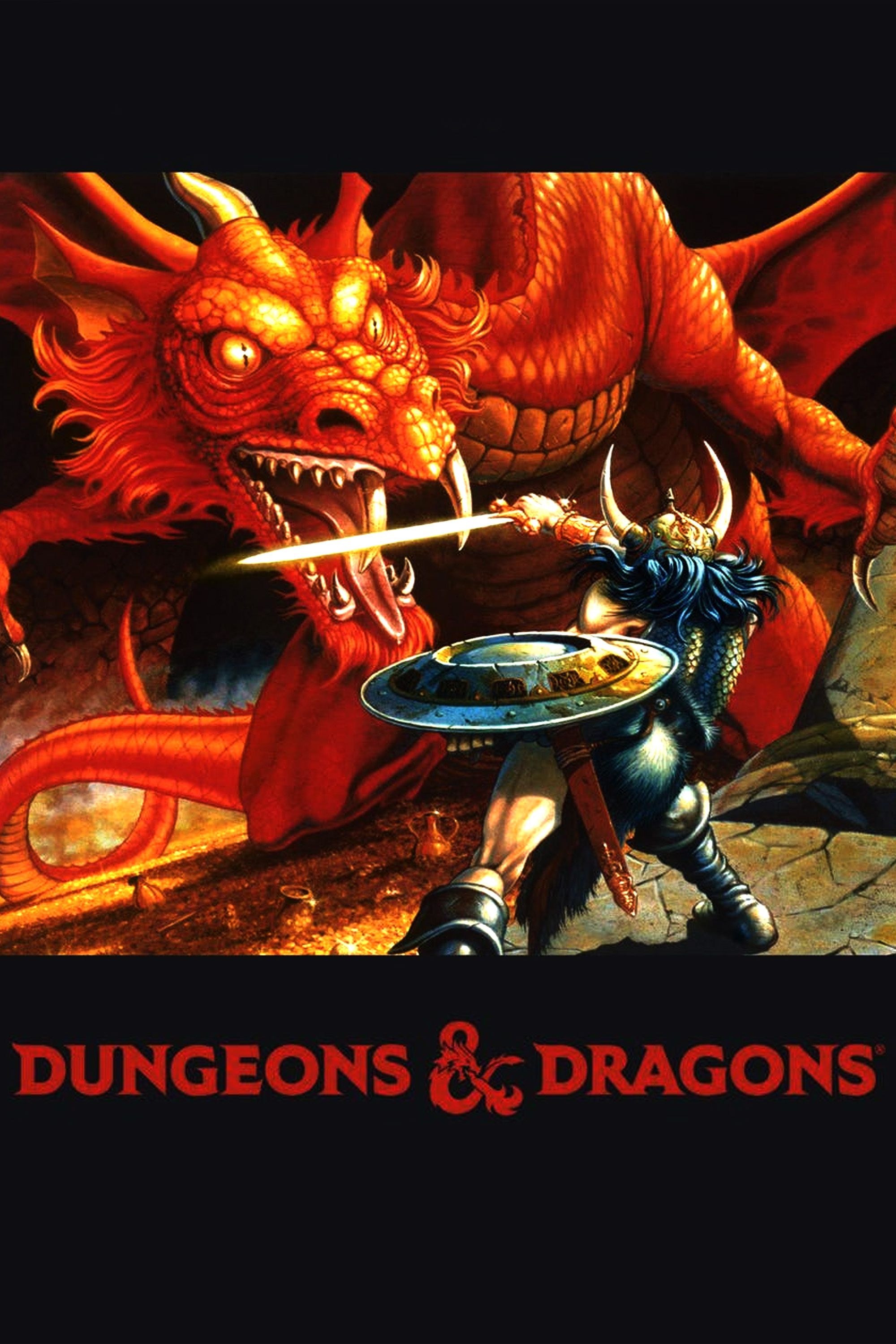Summary
- Ring Of Contrariness disguises itself as a regular magic ring and causes increasing discord within parties.
- Armor Of Arrow Attraction attracts projectiles, lowering AC; ends when removed.
- Helm Of Opposite Alignment shifts alignment immediately; reversal requires powerful magic.
Cursed Items are one of the most interesting and disruptive features in Dungeons & Dragons, but not many DMs dare to hand one of these to their party, since they have huge potential for total destruction if not handled with care. Every D&D player has encountered one or two of these items during their runs — perhaps even more.

Related
Dungeons and Dragons: School of Magic Tier List
Wizards in D&D have some of the most powerful available spells in Schools of Magic, with limitless options for roleplaying and spellcasting.
This ranked list spotlights the most disruptive and dangerous cursed items that players can find in this TTRPG — from one of the most simple yet fearsome cursed heirlooms to inconspicuous items that can pass as mere jewelry but have the potential to disrupt every player’s action from the moment they get their hands on them.
It is important to note that some of these items have been modified from the 3.5e version or adjusted to be played in 5th edition, so the rulesets might vary depending on the versions.
6
Bag Of Devouring
Every Wealthy Player’s Nightmare
- It can permanently maim or kill a player.
- It will swallow all the player’s wealth if they’re unaware of their mistake.
- Can ruin an entire party by draining them of their resources.
Every D&D player’s dream is to get a Bag of Holding early on and enjoy the advantage of not having to carry thousands of pounds worth of loot around. But players should be careful with what they wish for, as one of the most notorious (and infamous) cursed items could be posing for a Bag Of Holding, lying dormant until players drop their guard: The Bag of Devouring.
This cursed item acts as a Bag of Holding as long as the DM determines it does, but at some point, the bag starts to eat away at the player’s wealth, making it disappear into an endless limbo, never to be returned again. This can happen instantly or at a delayed rate (at the DM’s discretion), and the bag can even devour a player’s hand, arm, or entire body if they’re careless enough. This item has the potential to ruin an entire party, eating all their treasure, or worse: if the healer carries the cursed object, and it triggers at the wrong moment, it can cause a TPK. These characteristics make it the most dangerous and worrisome cursed object in the whole compendium.
5
Armor Of Arrow Attraction
Don’t Use This, DMs — Only Villains Do That
- Gives the players no warning about its curse.
- Looks like normal enchanted armor.
- Starts attracting projectiles the second they are fired near the user.
The infamous Armor Of Arrow Attraction is a cursed object that can come in various forms but is most often represented as a +2 Plate or Half-Plate armor that grants all the benefits of such an item. The Armor self-attunes to the user, like most cursed items, and it plays as a useful item for any Fighter, Paladin, or other melee class — until an arrow is fired near them.

Related
Dungeons And Dragons: 10 Things To Avoid When Creating NPCs
Avoid common NPC creation pitfalls in D&D to craft memorable characters that enhance gameplay and enrich your campaign’s narrative.
At that point, every projectile fired in a 60ft radius of the user is attracted to the armor, and the wearer takes a -15 penalty to AC checks against those attacks. In the middle of combat, this can turn any frontliner into a pincushion, and it will take a few Investigation or Arcana checks to recognize that the armor is cursed. Luckily, this item doesn’t require any special steps to get rid of it; simply removing it will end the curse. But of course, it takes time and leaves the user without any AC bonus whatsoever. The disruption potential of this cursed item is tremendous, and since the only way to figure out that the item is cursed is to wear or pass an Arcana check of 15, most players will fall into its trap for sure.
4
Horns Of Calling
They Come In Various Shapes And Evil Purposes
- These cursed callers are designed for evil purposes.
- They bend the minds of lesser creatures or attract the attention of higher ones.
- Some have a lot of roleplay potential but are a recipe for disaster.
Horn Of Calling are a category of cursed items that are not always cursed themselves, but they are created to cast a powerful curse that draws the attention of certain creatures to the place where these items are used. When a player blows one of these horns, depending on their elaboration purpose, it will make certain creatures flee but attract others in return.
The most infamous one is The Drakkhorn, a calling horn used by the Cult of The Dragon to attract chromatic Dragons within a radius of 2000 miles. That’s a lot of Dragons coming at the players if they ever get their hands on this object. Another evil version of this cursed item is the Horn Of The Dearly Departed, a cursed horn created by a powerful Necromancer that will act as a Horn of Repelling or Horn of Unyielding, but in turn, it attracts the attention of every undead in a 500-mile radius, including higher ones like Liches, Demi Liches, Wights, and Dracoliches.
3
Helm Of Opposite Alignment
The Nightmare Of Every Lawful Character (Especially Paladins)
- Players can incur the ire of their deities by wearing this object.
- It disrupts the party and can cause separation and disagreement.
- The user becomes mentally unstable immediately.
An oldie but goldie emerged from the old D&D 3.5 (and prior) compendium: a helmet that immediately turns any character to its opposite alignment upon wearing it. For example, once a Paladin of Tyr (Lawful Good) puts on this helmet, he will immediately shift to Chaotic Evil, losing their powers in the process. In D&D 5e, this will not happen until the Paladin breaks a couple of Oath tenants, shifting their subclass to Oathbreaker, but in previous versions of the TTRPG, this helmet killed entire parties.

Related
Dungeons & Dragons: Best Bard Builds
Coming up with any Dungeons & Dragons character is an intensive process, so here’s a guide to ensure players have the best bard they can build.
It is not simply the problem with classes restricted to alignment, but also the drastic personality change that the wearer suffers. What’s more: the effects are nearly irreversible, since it is a powerful curse that attacks the mind, and only a Greater Restoration Spell or a Wish spell can remove the permanent effects of the curse. Players do not always have easy access to this powerful magic, so readers can imagine how disruptive (and destructive) an object like this becomes to a unified group of adventurers.
2
Sword Of Vengeance
Tremendously Disruptive, Even More In Its Sentient Version
- Can have a will of its own.
- Disrupts the mind of the wielder, causes harm to party morale.
- Forces the wielder to attack anything and anyone.
A Sword of Vengeance is a cursed weapon possessed by an evil spirit that will hijack the mind of the wielder, forcing them to attack the nearest living being. The spirit sometimes gains sentience and can even dominate the cursedp layer, attacking their party members and forcing the wielder into a berserk mode that will not relent until either the user is dead (or unconscious) or the target of his rage is subdued. There are two ways to break the curse: one is to use a Banishment spell over the blade, which will make the spirit possessing the blade abandon the weapon. The other choice is to cast a compulsion spell to force the user to drop the blade, then cast a Restoration spell on the mind of the afflicted.
The first option will turn the blade into a common weapon; it will lose all magical properties. The second option makes the blade release the player of the curse, but the weapon remains a threat to whoever or whatever picks it up afterward. Even a simple kobold picking it up after the party leaves can become a troublesome foe in the future — more so because the spirit possessing the blade will hold a grudge against whoever separated it from their host, and it will pursue the players relentlessly, jumping from one host to the other until it satisfies its revenge.
1
Ring Of Contrariness
A Dangerous Item That Can Pose As Any Magic Ring
- Can be any regular magic ring, but it carries a powerful compulsory curse.
- Advanced versions of this curse cannot be removed by regular means.
- In certain cases, the curse escalates and takes the form of a Dire Jinx or Ill Luck.
This cursed item casually dropped in the middle of a party can cause it to shatter into pieces in only a few sessions. The curse seethes the mind of the wearer, which usually mistakes the item for a regular Magic Item, since it is made to do so and avoid Identify and the more exhaustive Arcana checks. It can pose as any Magical Ring, but it most commonly appears as a Ring of Spell Storing, which is incredibly useful for a spellcaster player. Once attuned to this object, the character will suffer several changes: they will become obnoxiously paranoid and distrustful of their allies, often arguing with them for petty reasons.
The curse will slowly escalate from simple disputes until the wearer becomes absolutely opposed to every party’s decision. In even finer versions of the curse (unleashed upon the players at the DMs discretion), this object becomes increasingly difficult to dispel. A few days after wearing it, the curse Item becomes impossible to defuse with the Dispel Curse spell. Then, the curse can take an even more advanced form, into a Dire Jinx or Ill Luck/Fate. To make things even more disruptive, the DMs can make the curse start to spread around the party, sowing distrust and enmity among them.

Dungeons and Dragons
- Franchise
-
Dungeons & Dragons
- Original Release Date
-
1974-00-00
- Designer
-
E. Gary Gygax
, Dave Arneson
















Leave a Reply